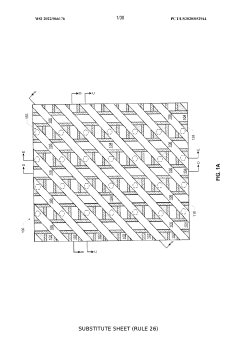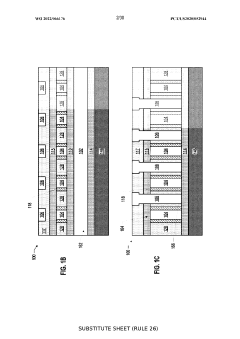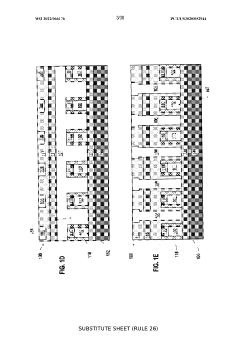Research on the development and application of quantum computing - Eureka
OCT 8, 20244 MIN READ
Generate Your Technical Report in Patsnap Eureka
AI-Powered Innovation Solution Platform for R&D
Quantum Computing Development Goals
The primary objective is to provide a comprehensive overview of the development history and evolution trends in the field of quantum computing. This includes tracing the key milestones and breakthroughs that have shaped the progress of quantum computing technology over time. Additionally, it aims to clearly define the expected technological goals and potential applications that quantum computing seeks to achieve in the future.
By examining the historical trajectory and identifying the driving forces behind quantum computing's advancement, this section lays the foundation for understanding the current state of the technology and its future prospects. It serves as a crucial starting point for the subsequent analysis and exploration of market demands, technological challenges, and potential innovation pathways within the quantum computing domain.
By examining the historical trajectory and identifying the driving forces behind quantum computing's advancement, this section lays the foundation for understanding the current state of the technology and its future prospects. It serves as a crucial starting point for the subsequent analysis and exploration of market demands, technological challenges, and potential innovation pathways within the quantum computing domain.
Market Demand for Quantum Computing
- Quantum Computing Market Overview
Quantum computing has the potential to revolutionize various industries, including finance, healthcare, cybersecurity, and scientific research. The market is expected to grow rapidly due to increasing investments and technological advancements. - Key Applications and Use Cases
Quantum computing can solve complex problems faster than classical computers, enabling breakthroughs in areas like drug discovery, financial modeling, cryptography, and optimization problems. - Market Drivers and Opportunities
The demand for quantum computing is driven by the need for faster computation, improved cybersecurity, and the ability to tackle complex simulations and calculations. - Market Challenges and Barriers
Challenges include the high cost of development, the need for specialized expertise, and the lack of a standardized quantum computing ecosystem. - Regional Market Analysis
Major regions investing in quantum computing include North America, Europe, and Asia-Pacific, with countries like the US, China, and Japan leading the way.
Current State and Challenges in Quantum Computing
- Quantum Computing Challenges
Overcoming technical hurdles like quantum decoherence, error correction, and scalability issues. - Hardware Limitations
Current quantum hardware is limited in qubit count, coherence time, and gate fidelity. - Software Ecosystem
Lack of mature software tools, algorithms, and programming frameworks for quantum computing. - Talent Shortage
Shortage of skilled researchers and engineers with expertise in quantum computing. - Geographical Distribution
Quantum computing research is concentrated in a few countries, with the US, China, and Europe leading the way.
Evolution of Quantum Computing Technologies

Existing Quantum Computing Solutions
01 Quantum Computing Systems and Methods
Various quantum computing systems and methods are disclosed, including systems for performing quantum computations, executing quantum algorithms, and interacting with quantum computing systems. These leverage quantum mechanics principles for computations with higher speed and power compared to classical computing.- Quantum Computing Systems and Methods: Various quantum computing systems and methods are disclosed, including systems for performing quantum computations, executing quantum algorithms, and simulating quantum systems, often involving specialized hardware and software components designed to leverage quantum phenomena for computational tasks.
- Quantum Computing Architectures and Designs: Descriptions of quantum computing architectures, designs, and components are provided, including quantum processors, quantum circuits, and quantum computing elements, covering various aspects of quantum computing hardware and system configurations.
- Hybrid Quantum-Classical Computing: Techniques and systems for combining quantum and classical computing resources are described, enabling hybrid quantum-classical computations, involving integrating quantum and classical hardware and software components to leverage the strengths of both approaches.
- Quantum Computing Optimization and Problem-Solving: Methods and systems for using quantum computing to solve complex optimization problems, inverse problems, and computational tasks requiring exhaustive search are presented, leveraging the unique capabilities of quantum computing for tackling challenging computational problems.
- Quantum Computing Simulation and Modeling: Techniques for simulating and modeling quantum computing systems, devices, and processes are disclosed, including validators, optimizers, and discretization methods for quantum computing simulations, as well as task processing methods and systems for quantum computing simulations.
02 Hybrid Quantum-Classical Computing
Hybrid quantum-classical computing systems and methods combine quantum and classical computing capabilities. These approaches leverage the strengths of both paradigms, using quantum computing for computationally intensive tasks and classical computing for other tasks, enabling efficient and powerful computational solutions.03 Quantum Computing Architectures and Hardware
Various quantum computing architectures and hardware designs are disclosed, including quantum processors, devices, and modules. These are designed for efficient and scalable quantum computations, addressing challenges like qubit control, error correction, and interconnectivity.04 Quantum Computing Optimization and Simulation
Methods and systems are presented for optimizing and simulating quantum computing processes, including techniques for optimizing quantum circuit designs, simulating quantum computing systems, and solving complex optimization problems using quantum computing, aiming to improve efficiency, accuracy, and applicability.05 Quantum Computing Applications and Algorithms
Various applications and algorithms leveraging quantum computing are disclosed, including quantum machine learning, quantum computational methods for solving specific problems, and quantum algorithms for tasks like optimization, simulation, and data processing, exploiting quantum computing's unique capabilities.
Key Players in Quantum Computing Industry
The quantum computing industry is in its early stages, with a mix of tech giants and specialized firms driving advancements. Companies like IBM, Google, and Intel are leading the charge with substantial investments, showcasing high technical maturity. Emerging players like Origin Quantum Computing Technology and Quantinuum are also making notable progress. The market is expected to expand rapidly as quantum computing moves from theoretical research to practical applications.
Intel Corp.
Technical Solution: Intel is researching quantum processors and algorithms, including the 49-qubit Tangle Lake superconducting quantum processor.
Strength: Strong hardware capabilities. Weakness: Early stages compared to leaders.
International Business Machines Corp.
Technical Solution: IBM is a leader with IBM Q Experience, Qiskit, and quantum processors like the 65-qubit Hummingbird and 127-qubit Eagle.
Strength: Comprehensive ecosystem and cloud services. Weakness: Scaling up qubits is complex.
Core Innovations in Quantum Computing
Quantum computing systems, apparatus, and methods
PatentWO2022066176A1
Innovation
- Detecting a qubit state with a transition pulse histogram
- High resolution and high speed rectangular pulse generation
- Large-scale spin qubit state readout
Regulatory Landscape for Quantum Technologies
Quantum computing is an emerging technology that harnesses the principles of quantum mechanics to perform computations exponentially faster than classical computers. The development of quantum computing has undergone several key stages, from theoretical foundations to experimental demonstrations and the pursuit of practical applications.
The market demand for quantum computing is driven by its potential to revolutionize various industries, including cryptography, drug discovery, financial modeling, and optimization problems. Major players, such as IBM, Google, and Microsoft, are investing heavily in quantum computing research and development.
Current quantum computing solutions primarily focus on developing quantum hardware, such as superconducting qubits and trapped-ion systems, as well as quantum algorithms and software frameworks. Key innovations include error correction techniques, quantum control methods, and scalable architectures.
Potential future directions for quantum computing research include the development of fault-tolerant quantum computers, the exploration of new quantum computing paradigms (such as quantum annealing and quantum simulation), and the integration of quantum computing with other emerging technologies like artificial intelligence and distributed computing.
the structure of the environmentally friendly knitted fabric provided by the present invention; figure 2 Flow chart of the yarn wrapping machine for environmentally friendly knitted fabrics and storage devices; image 3 Is the parameter map of the yarn covering machine
Login to View More Ethical Considerations in Quantum Computing
Quantum computing is an emerging technology that harnesses the principles of quantum mechanics to perform computations exponentially faster than classical computers. The development of quantum computing has undergone several key stages, from theoretical foundations to experimental demonstrations and the pursuit of practical applications.
The market demand for quantum computing is driven by its potential to revolutionize various industries, including cryptography, drug discovery, financial modeling, and optimization problems. Major players, such as IBM, Google, and Microsoft, are investing heavily in quantum computing research and development.
Current quantum computing solutions primarily focus on gate-based and annealing-based approaches, with ongoing efforts to increase the number of qubits and improve error correction techniques. Key innovations in areas like quantum error correction, fault-tolerant quantum computing, and quantum algorithms are expected to drive future advancements in this field.
the structure of the environmentally friendly knitted fabric provided by the present invention; figure 2 Flow chart of the yarn wrapping machine for environmentally friendly knitted fabrics and storage devices; image 3 Is the parameter map of the yarn covering machine
Login to View More If you want an in-depth research or a technical report, you can always get what you want in Patsnap Eureka TechResearch . Try now!



